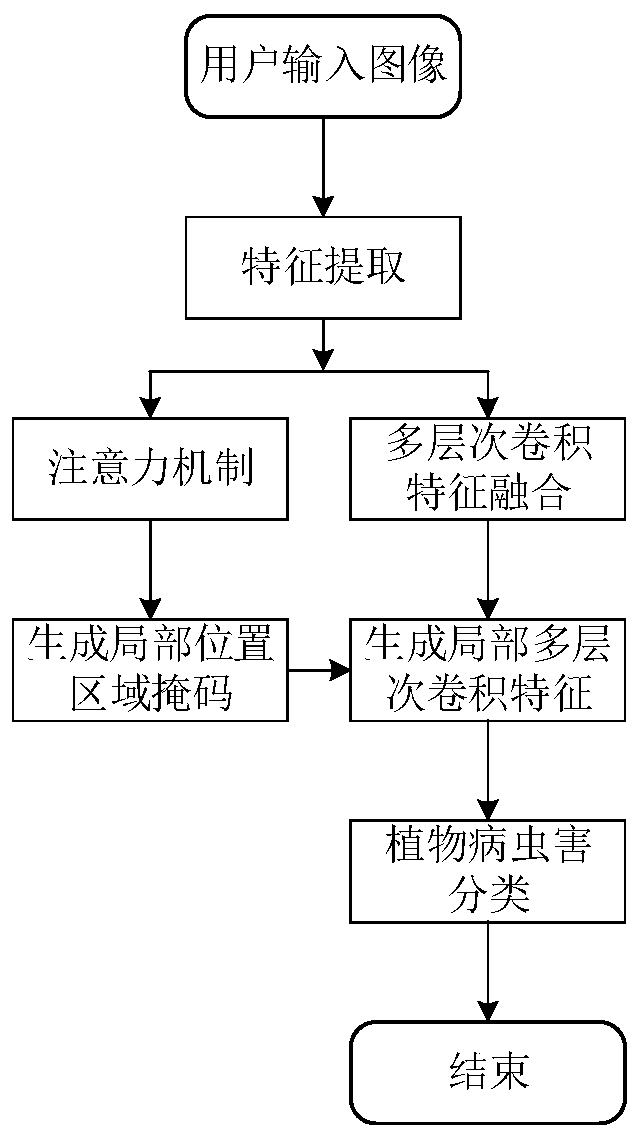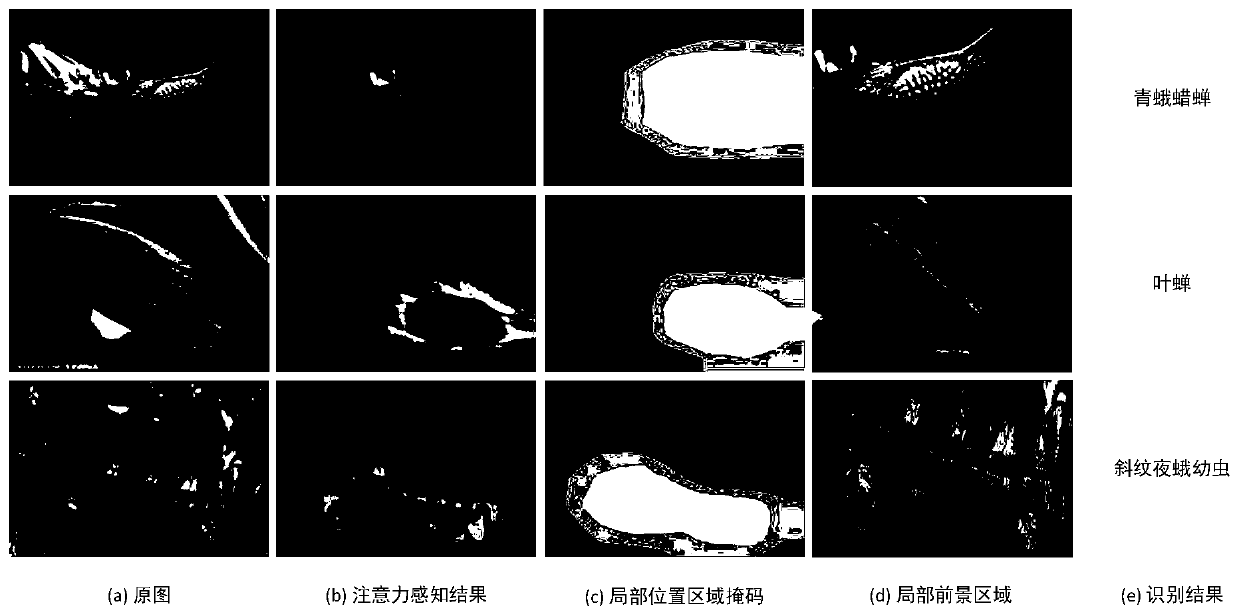Plant disease and pest identification method based on attention mechanism and multi-level convolution characteristics
An identification method and technology of pests and diseases, applied in the field of image processing, can solve problems such as interference of complex background information, and achieve the effect of reducing interference
- Summary
- Abstract
- Description
- Claims
- Application Information
AI Technical Summary
Problems solved by technology
Method used
Image
Examples
Embodiment Construction
[0021] The present invention designs a new deep convolutional neural network architecture, which includes two branches after the convolutional layer of the deep convolutional neural network model, the first branch is the attention mechanism branch, and the second branch is used for Branch of the classification of plant pests and diseases. The mask of the local location area of plant diseases and insect pests is generated by branching the attention mechanism, and combined with multi-level convolutional features, the recognition of plant diseases and insect pests in the complex background of natural scenes is realized. The specific implementation manners of the present invention will be further described in detail below in conjunction with the accompanying drawings. The following examples are used to illustrate the present invention, but are not intended to limit the scope of the present invention.
[0022] refer to figure 1 The shown deep convolutional neural network archit...
PUM
 Login to View More
Login to View More Abstract
Description
Claims
Application Information
 Login to View More
Login to View More - R&D
- Intellectual Property
- Life Sciences
- Materials
- Tech Scout
- Unparalleled Data Quality
- Higher Quality Content
- 60% Fewer Hallucinations
Browse by: Latest US Patents, China's latest patents, Technical Efficacy Thesaurus, Application Domain, Technology Topic, Popular Technical Reports.
© 2025 PatSnap. All rights reserved.Legal|Privacy policy|Modern Slavery Act Transparency Statement|Sitemap|About US| Contact US: help@patsnap.com



